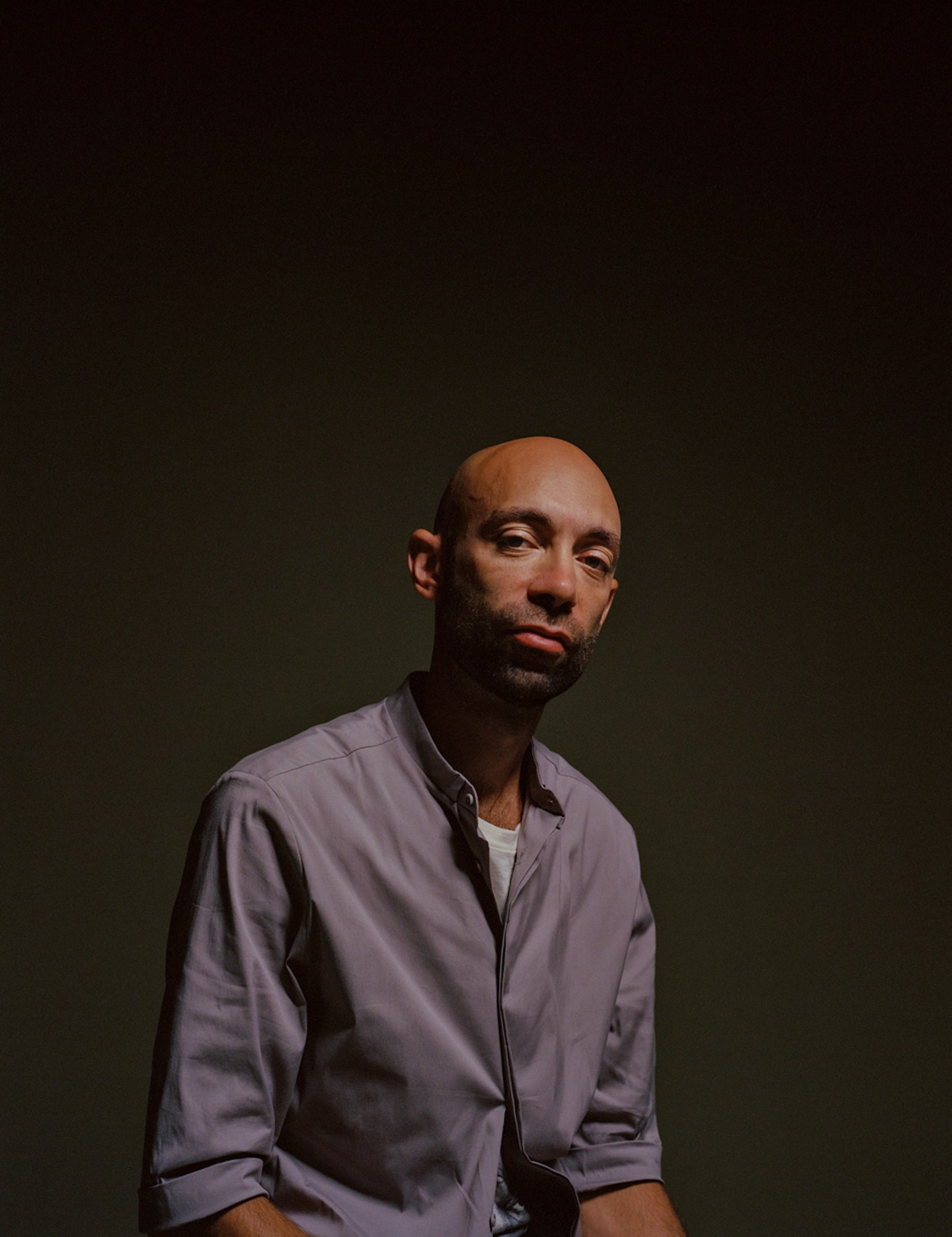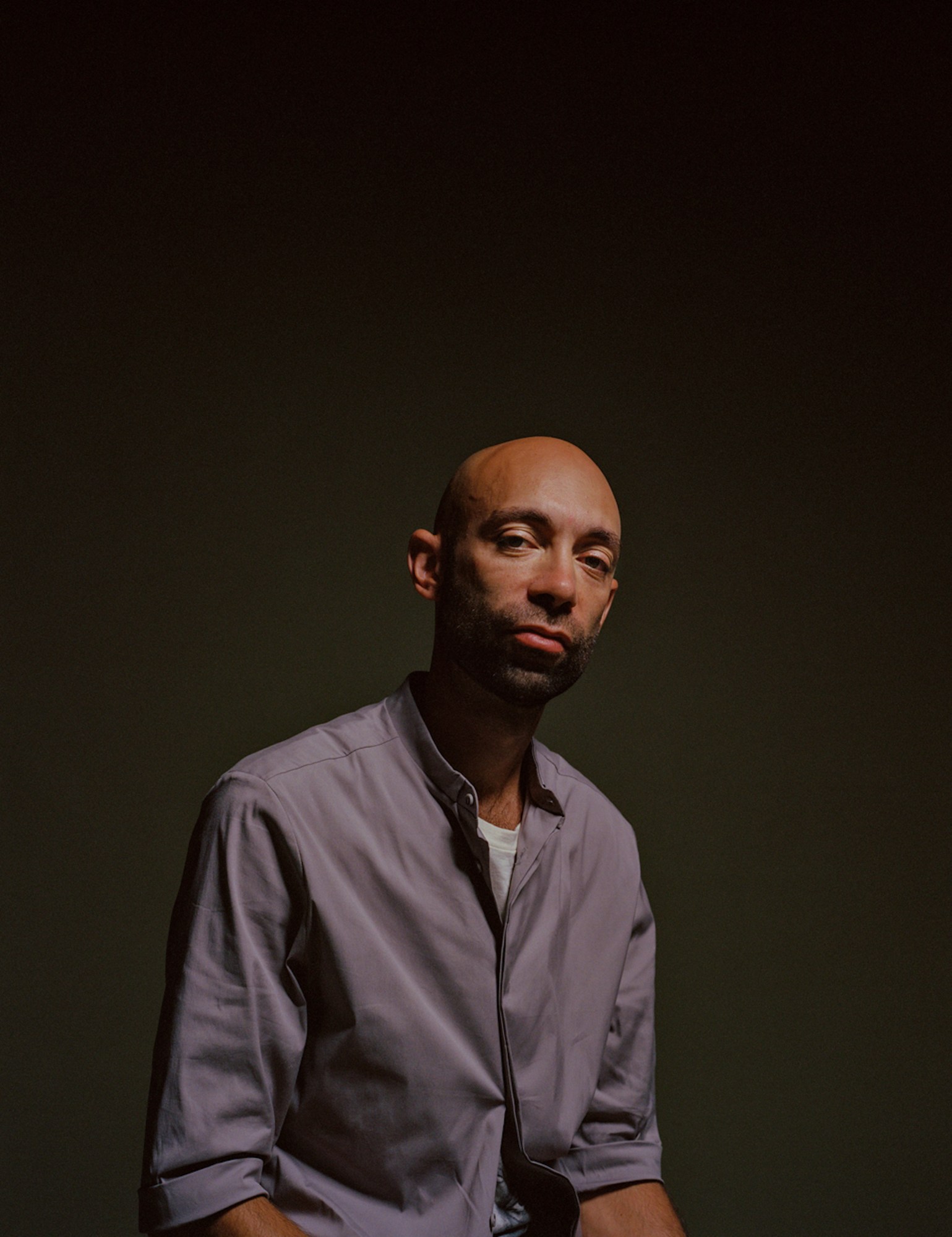This story originally appeared in i-D’s The Darker Issue, no. 365, Winter 2021. Order your copy here.
Aaron Gilbert is a Brooklyn-based artist. His work is symbolic, spiritual, and enigmatic, and finds relationships between the transcendent and sacred and modern everyday life.
What struck me about your work when I first came across it, is its very clear relationship to the sacred, and how you intertwine that with the every day of ordinary people.
The sacred is what I’m invested in. Deciphering how we access a power that transcends all the material structure of this world. I would say that I operate on the idea that none of us know how powerful we are. None of us know what we’re capable of doing or why we’re here and, to me, the most interesting thing in being alive is trying to decipher that and unlock it and be a transformative force in the world. I’ll try not to go too far with this, but basically-
No. No. Go all the way.
Whoever I’m in proximity to at any moment, I think there’s this possibility they’re carrying something that could unlock something for me and, I can for them. I tend to dial into these very subtle, intimate interactions with people who are close to each other. If you described it over the phone to somebody it wouldn’t seem monumental. But then, as I began to build the image, you see the presence of these larger historical forces.

You paint everyone’s eyes in a similar style. Why is that? It somehow enhances my sense of the spiritual and sacred in the work. There’s an other-worldliness to all of these figures in these paintings as if they’ve passed on to this other sphere.
I’m not totally sure why I do that, but I think it is something that points to a mythological reading. It’s leaning on older traditions of painting that were more about the symbolic, where the architecture, the scale, the figures, in fact all the decisions were made to show different hierarchies of meaning instead of to dazzle you with how realistic they could be. So that might be one answer. Another is this shell, our exterior, and then there’s this thing inside it that we identify as the self. It’s amorphous and really hard to pin down, so the eyes alienate the connection between the two, or it creates this distance and separation between them.
I guess it’s partly one of the things that lead me to be thinking about vernacular, in that you don’t read it as showing off. They are confrontational. It’s really mysterious and affective.
That’s nice to hear. There’s something there with the reference to vernacular. I’m not trained in and I’ve never done classical painting, I’ve never been that interested in it. I’m more interested in my own idiosyncrasies.
But when you talk about these intimate relationships, these moments between people, it did inevitably remind me of early Italian Renaissance painting where there are these quiet moments that become revelations, both for the subjects in the paintings and also for the viewer. Is that a model for you?
I like the moments in painting history that lived on a bridge between two ways of thinking, there’s these breaks and logic between Giotto for example and then Trecento, Quattrocento. Like Fra Angelico, you’re still in this world of magic, but then you’re also halfway into this world of logic and reason. There’s these ruptures.
Your images and the context in which these figures and people find themselves located are intensely, aggressively ordinary and prosaic. For example, the painting of the man handing the food to this friend, the bus driver behind the plastic sheeting during Covid. This feels almost local. Would you consider yourself a local artist?
Absolutely. When you’re looking at these grander spiritual signs, to me those have value in the way that you can use them to order how you move through the world that you’re inhabiting. To me, I’m only interested in the spiritual to the degree that it helps orient how I should move through the world today.
I think there’s an observation of the interstitial, psychic and physical spaces. Just in terms of people’s clothes or the environment that they find themselves in. But beyond that, when you talk about the physical world we find ourselves in, the bodies you depict seem to be under the weight of capitalism.
I want that force to be very present. I want it to be as dominant in the work as it is in our lives. You have the presence of these forces but then I’m interested in finding where we can access the power that can circumvent the rules of the game, you know?
Credits
Photography Steven Traylor
Fashion Tamia Mathis
Hair Nikki Nelms (Deana Lawson)
Make-up Sara Tagaloa using M.A.C Cosmetics
Photography assistance Harris Mizrahi and Joshua Elan
Fashion assistance Armando Armenta and Chanti Walker
Make-up assistance Anna Kato
Production Camera Club
Special thanks Sunhaus, The Forge, Icon LA, Chroma Center, Karis Dolberry and Jil Sander
Casting director Samuel Ellis Scheinman for DMCASTING


